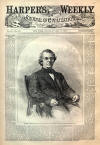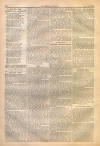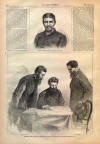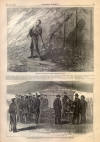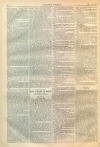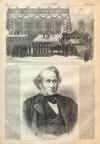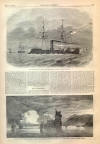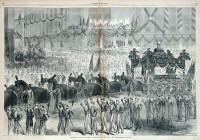Confederate Warship "Stonewall"
|
|
This Site:
|
MAY 13, 1865.] HARPER'S WEEKLY. 301 THE CONFEDERATE STEAM RAM "STONEWALL" LEAVING LISBON HARBOR.(Continued From Previous Page) for truth. What PEEL said of PALMERSTON, even PALMERSTON'S more recent antagonists night have . said of COBDEN, " We are all proud of him." He was still sanguine of recovery, it is said; he made sure that a few days of warm weather would restore him to health; but the days of warm weather did not come ; he gradually grew worse, and at a quarter past eleven on Sunday morning, April 2, at the age of sixty-one, he expired. The immediate cause of his death is said to have been bronchitis. In this country the death of RICHARD COBDEN becomes as much an occasion of grief as in his own. His views in politics were cosmopolitan. He was on the side of struggling humanity every where. Hardly had he been buried before there were found Englishmen enough to ask, "Are we not making too much of this COBDEN? Was he not the advocate of manhood suffrage—that most pernicious doctrine to British aristocrats ? Is not this the political Apostle who has preached until he has by his preaching destroyed the prestige of the privileged classes? Hes he not put Generals, Admirals, civil servants, upon their trial ? He never spoke or acted like an Englishman. ' He hath mocked at our gains, laughed at our losses, cooled our friends, heated our enemies.' He has uniformly given the least charitable construction to his country's acts, and glossed over the wrong-doing of other nations. He has admitted every charge made by foreign nations against us, and indorsed it with libels of his own." These things high-blooded Englishmen can not forget. Least of all can they forget that he stigmatized those Englishmen who sympathized with the American rebellion as the enemies of hit-man liberty at home. But the people every where remember simply that he was their friend. THE "STONEWALL."IT has been mentioned that the Portuguese fort of Belem, at the entrance of Lisbon Harbor, fired upon the American ships of war Niagara and Sacramento when the Governor of the fort believed that they were about to break the neutrality of the harbor by going out in pursuit of the Confederate vessel Stonewall. The Portuguese Government has since apologized, and dismissed the Governor from his post. The Confederate steam-rani Stonewall came into Lisbon on the 26th of March. The Stonewall is a steam-ram of about 1200 tons measurement, I rig-rigged, and of 500 horse power, capable of working up as high as 1700. She carries three guns mounted—two 70-pounder Armstrong guns in the turret abaft the mainmast, and one 300-pounder Armstrong gun in the forecastle, just over the ram; this gun can also be trained as a broadside gun, and is a most formidable piece of artillery. The turret is not a movable one, but the guns can be trained to bear either fore or aft, or as broadside guns likewise. She is plated with 5-inch iron plates, and 6-inch forward. The ram projects about 18 feet under the water-line, and is very sharp; it gradually rounds off to the deck, and is surmounted by the 300-pounder. She steams very fast--the officers say thirteen knots at sea. The Stonewall was built at Bordeaux for the Danish navy, but not being finished in time was rejected by the Danes, and then was bought by the Confederates. She had just come down from Ferrol, where she had been repairing; and the Niagara and Sacramento, who had been on the look out for her, arrived March 27. The Stonewall is commanded by Captain T. J. PAGE, of the Confederate navy, and has a strong company of officers and men. She was ordered by the Portuguese Government to leave in twenty-four hours. We show in the sketch on page 301, besides the Stonewall, the Portuguese corvette Sagres and the United States steamers Niagara and Sacramento, and in the distance Fort St. Julian and the Bugio Light-house. On reference to our illustration it should be observed that the Sacramento and Niagara are seen to the left hand, the Niagara being the nearer of the two; while the Bugio Lighthouse is seen in the distance, between the Niagara and the Stonewall; the Portuguese corvette and Fort St. Julian are shown to the right hand of the view. THE TOWER OF BELEM FIRING ON THE UNITED STATES FRIGATES "NIAGARA" AND "SACRAMENTO" LYING IN LISBON HARBOR.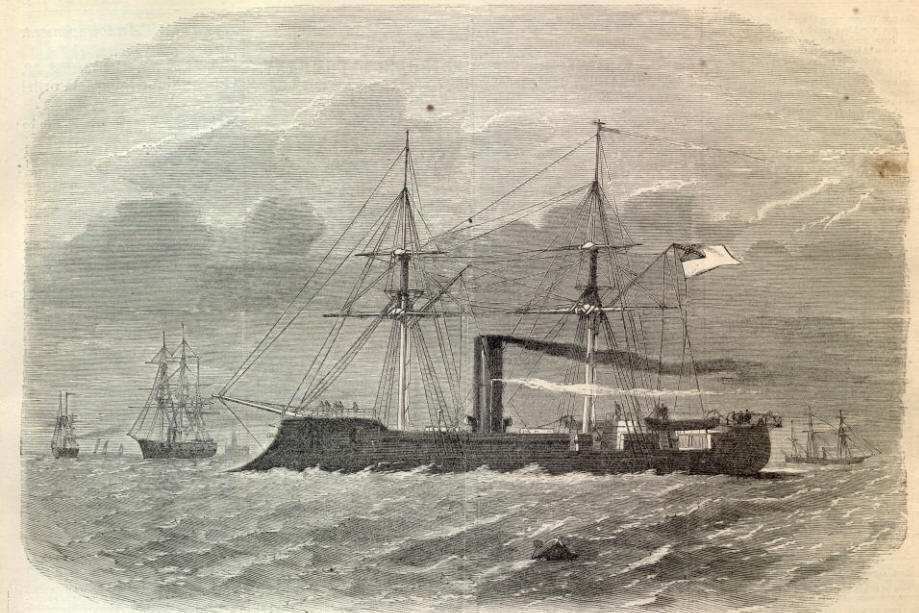 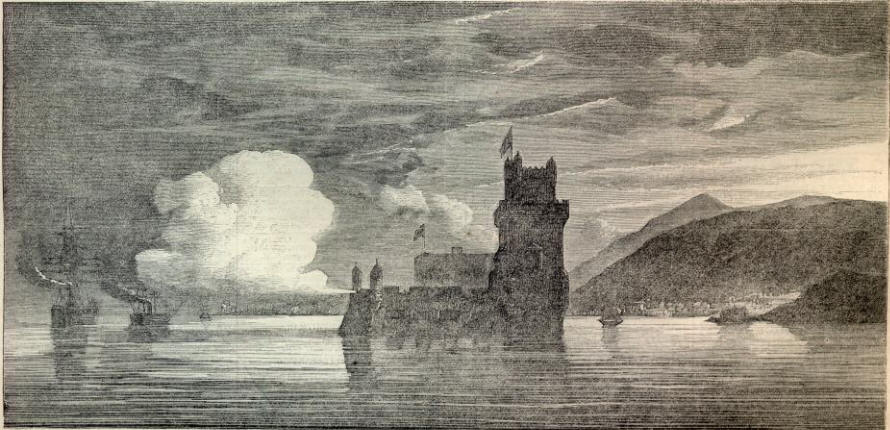 |
||||||||||||||||||
|
|
||
|
|
Site Copyright 2003-2018 Son of the South. For Questions or comments about this collection, contact paul@sonofthesouth.net |
|
|
Are you Scared and Confused? Read My Snake Story, a story of hope and encouragement, to help you face your fears. |
||
